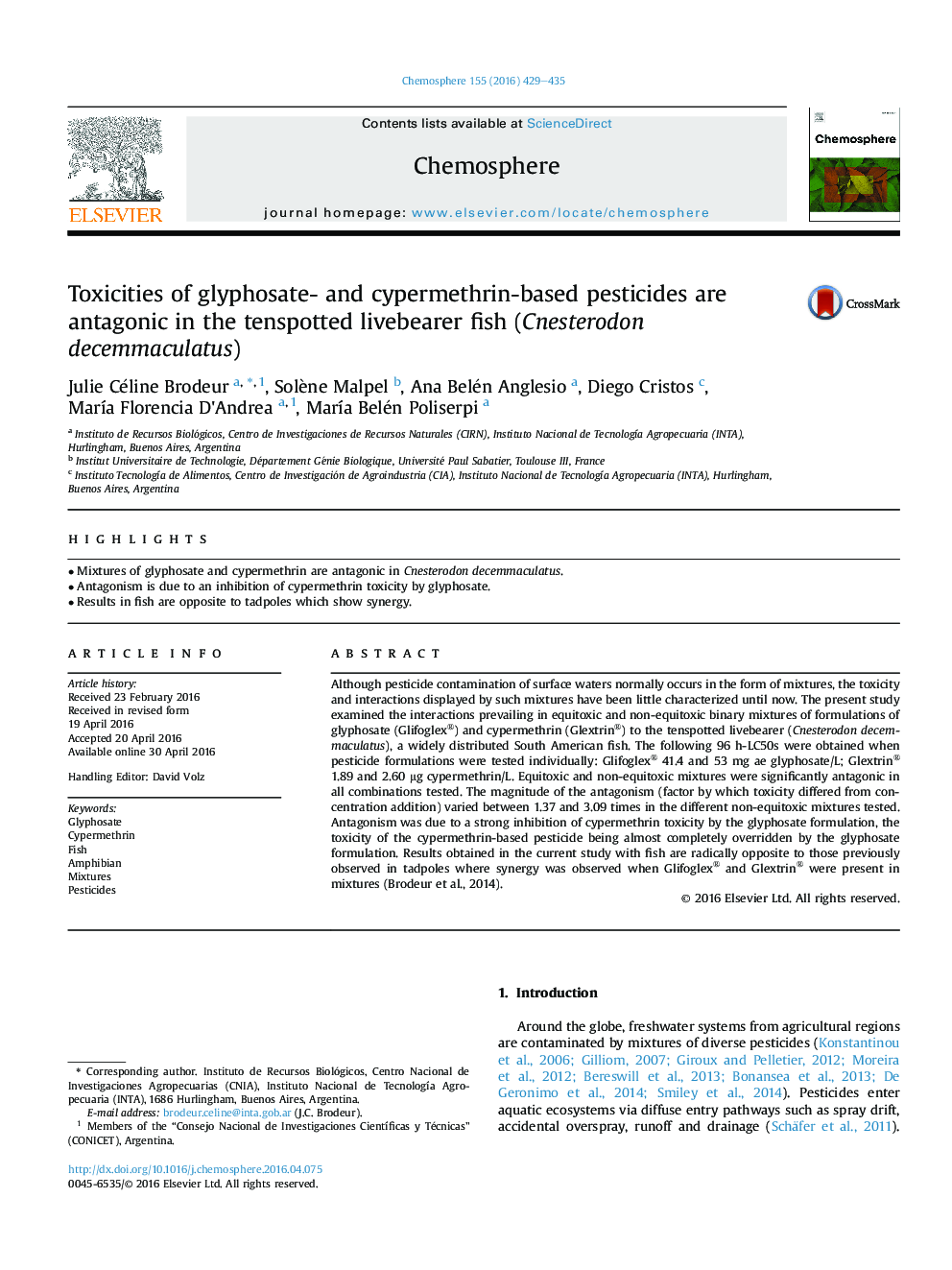| Article ID | Journal | Published Year | Pages | File Type |
|---|---|---|---|---|
| 4407529 | Chemosphere | 2016 | 7 Pages |
•Mixtures of glyphosate and cypermethrin are antagonic in Cnesterodon decemmaculatus.•Antagonism is due to an inhibition of cypermethrin toxicity by glyphosate.•Results in fish are opposite to tadpoles which show synergy.
Although pesticide contamination of surface waters normally occurs in the form of mixtures, the toxicity and interactions displayed by such mixtures have been little characterized until now. The present study examined the interactions prevailing in equitoxic and non-equitoxic binary mixtures of formulations of glyphosate (Glifoglex®) and cypermethrin (Glextrin®) to the tenspotted livebearer (Cnesterodon decemmaculatus), a widely distributed South American fish. The following 96 h-LC50s were obtained when pesticide formulations were tested individually: Glifoglex® 41.4 and 53 mg ae glyphosate/L; Glextrin® 1.89 and 2.60 μg cypermethrin/L. Equitoxic and non-equitoxic mixtures were significantly antagonic in all combinations tested. The magnitude of the antagonism (factor by which toxicity differed from concentration addition) varied between 1.37 and 3.09 times in the different non-equitoxic mixtures tested. Antagonism was due to a strong inhibition of cypermethrin toxicity by the glyphosate formulation, the toxicity of the cypermethrin-based pesticide being almost completely overridden by the glyphosate formulation. Results obtained in the current study with fish are radically opposite to those previously observed in tadpoles where synergy was observed when Glifoglex® and Glextrin® were present in mixtures (Brodeur et al., 2014).
